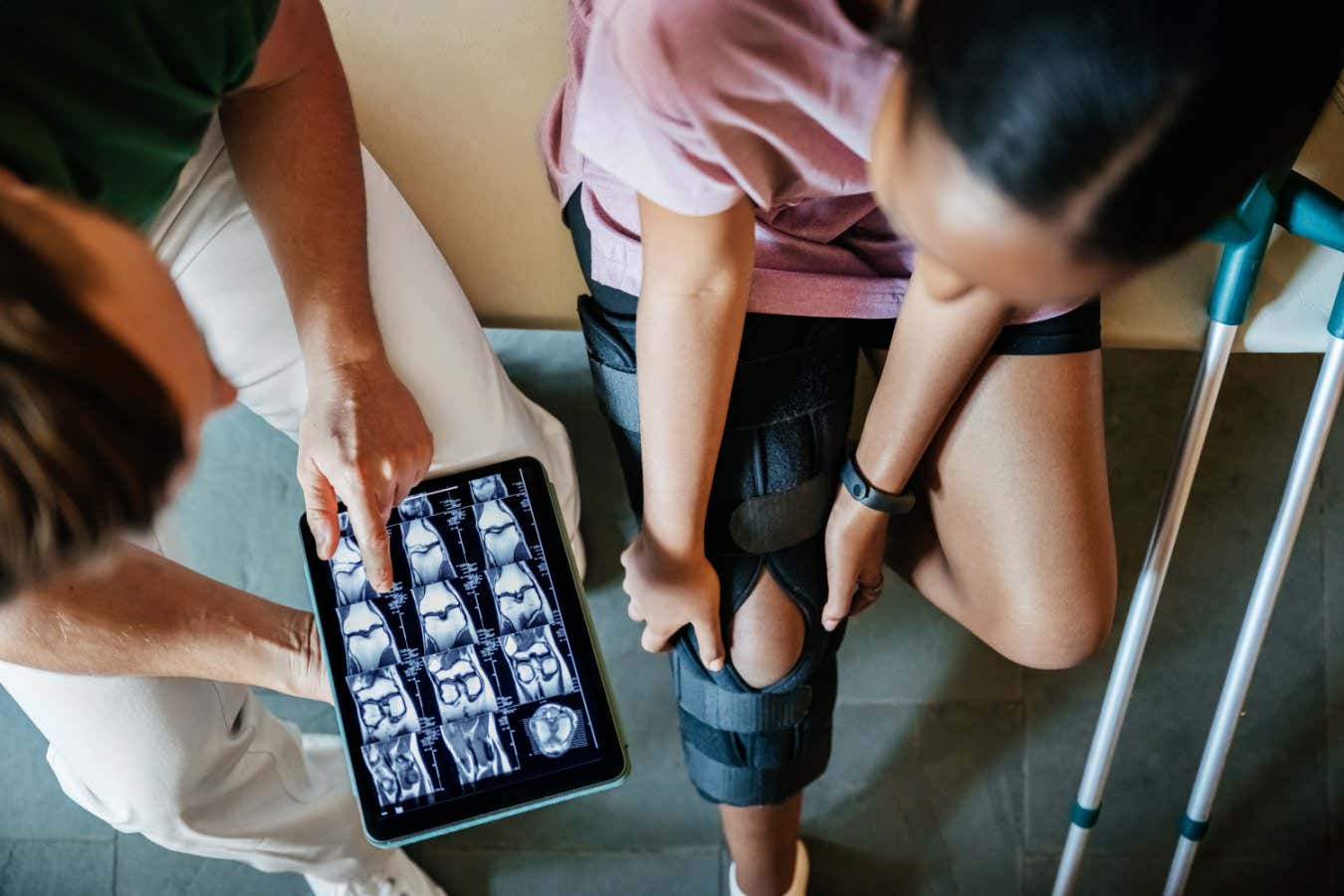Knee osteoarthritis is often treated via non-drug therapies, and now we have an idea of which ones work best
By Carissa Wong
18 June 2025
Knee braces really do seem to relieve symptoms of osteoarthritis that affects the joint
Tom Werner/Getty Images
Knee braces and water-based exercise appear to be two of the most effective ways to ease the pain and stiffness caused by knee osteoarthritis. That is according to a review of 12 non-drug therapies, but higher-quality evidence is needed before this guides clinical practice.
The condition is caused by the wear and tear of cartilage that cushions the ends of bones, leading to inflammation, pain and stiffness. Painkillers and anti-inflammatory drugs can relieve these symptoms, but can also have side effects, so clinicians typically recommend physical therapies, such as shoe insoles to relieve knee pressure, supporting the joint with tape or using laser therapy to promote cartilage healing.
Read more
Rheumatoid arthritis could be treated by eating probiotic bacteria
Advertisement
However, it is unclear how these methods compare. “A lot of reviews of treatments only look at how well a single therapy works,” says Sarah Kingsbury at the University of Leeds in the UK, who wasn’t involved in the latest research.
To fill this gap, Yuan Luo at the First People’s Hospital of Neijiang in China and colleagues analysed data from 139 randomised controlled trials that collectively assessed 12 approved or experimental physical therapies for knee osteoarthritis. Those trials together involved more than 9600 adults with the condition.
Some of them compared two or three physical therapies, while others tested one therapy against a placebo or no treatment. The participants generally received some form of therapy for several weeks before completing surveys on their symptoms.
